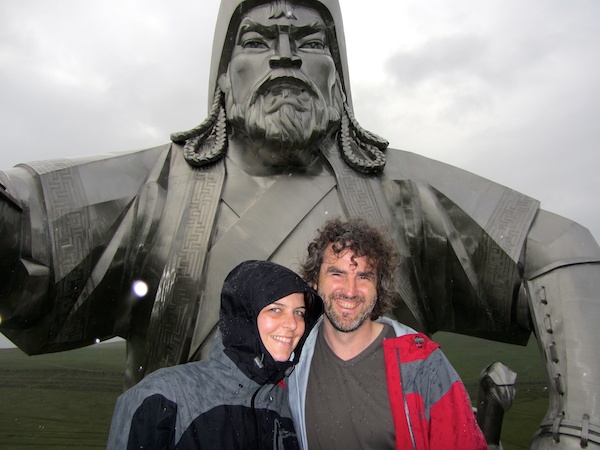Having arrived in the Mongolian capital Ulaanbaatar, we met Oggi, our guide for the next few days, who took us out on an orientation walk. We began at the grand Sukhbaatar Square, named in honour of the founding member of the Mongolian People’s Party who was largely responsible for the switch from Chinese to Soviet rule, and whose statue stands in the centre.
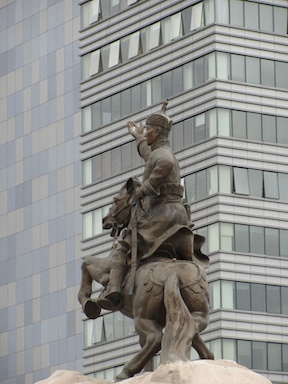
Sukhbaatar Statue 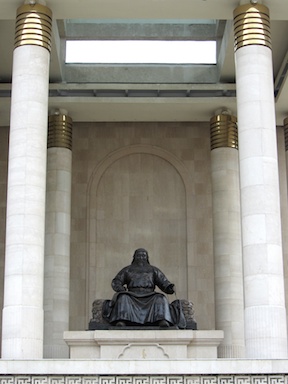
Chingiss Khan looks down from parliament
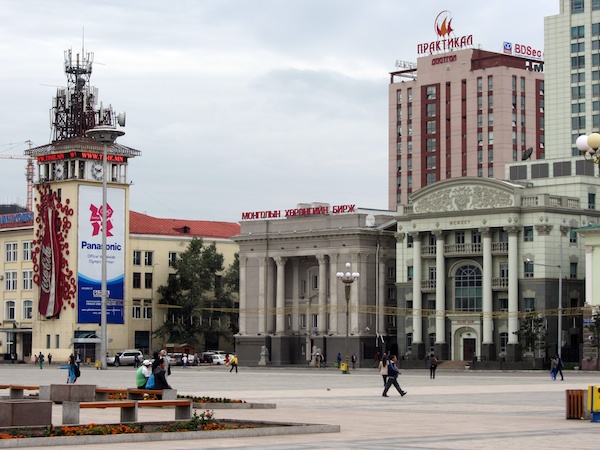
Some visiting dignitaries were expected, which explained the red carpets and the honour guard outside the parliament building.
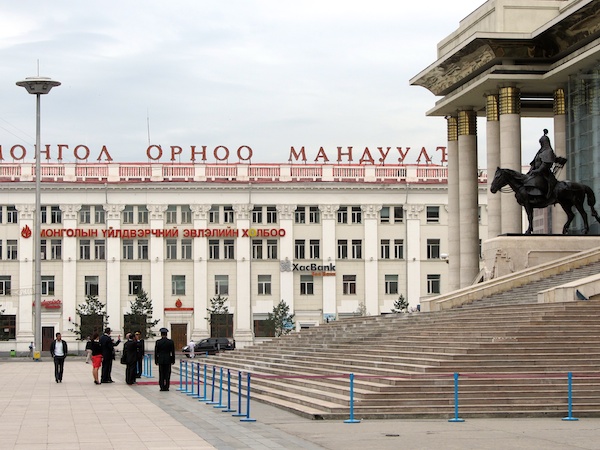
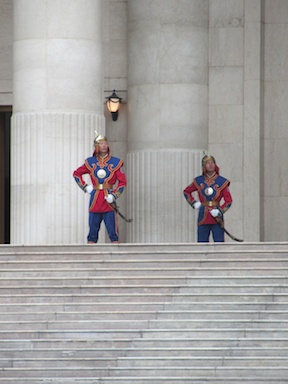
Honour guard outside parliament 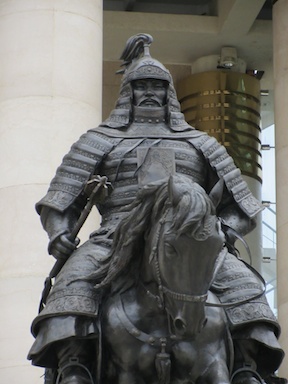
Khubilai Khaan
Away from the pomp of Sukhbaatar Square, it is obvious that the city is quite poor, with rotting buildings and rutted roads, unsurprising given its recent history of economic occupation by first the Chinese and then the Russians. Looking around, it’s obvious that the main industry is anglophone tourism from the Trans-Siberian railway. Many shop signs are in English, and it seems that every corner has its karaoke, ‘Irish’ or ‘London’ pub. Mind you, we did try an ‘Irish’ bar and it had none of the usual fake tat, in fact it was really just a high-end Mongolian bar with a Western name, and therefore much more pleasant than we expected.
The next stop on our little tour was the Gandantegchinlen monastery, destroyed (along with most Mongolian Buddhist sites) by the communists in the 1930s but rebuilt when the Russians left in 1990. The original copper and gold buddha was taken to Russia and melted down, but it has been replaced by a 26.5 metre gilt copper statue, the Migjid Janraisig, which stands inside an impressive purpose-built temple.
Photography is not allowed inside the temple, but once through the door, we found ourselves in a huge space held up by four gaily painted tree trunks, surrounding the enormous buddha. Wooden terraces cling to the inside of the walls on several levels. As we circled the statue in the approved pilgrim’s direction (clockwise), hundreds of statuettes of Yush, the buddha of longevity, stared at us from stacks of shelves to our left. Each carving is different, and each is dressed in a different coloured cloak, representing the inevitability of ageing.
On our right, between us and the great buddha, stood a great many brass prayer wheels, constantly in motion as visitors give them a boost as they go past. Some are quite elaborate with projecting handles, but most are simple cylinders which are spun with the flat of the hand.
Outside the temple are the impressive golden feet that are all that remain of the original buddha statue.
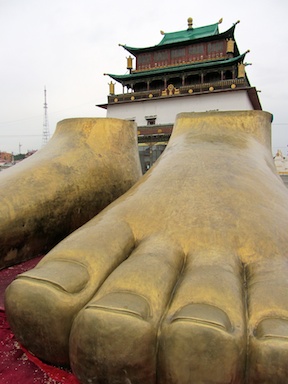
Feet of the old buddha eclipse the temple 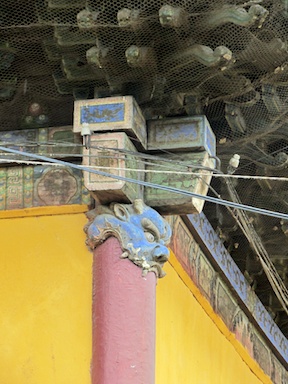
Post detail at Gandantegchinien Monastery
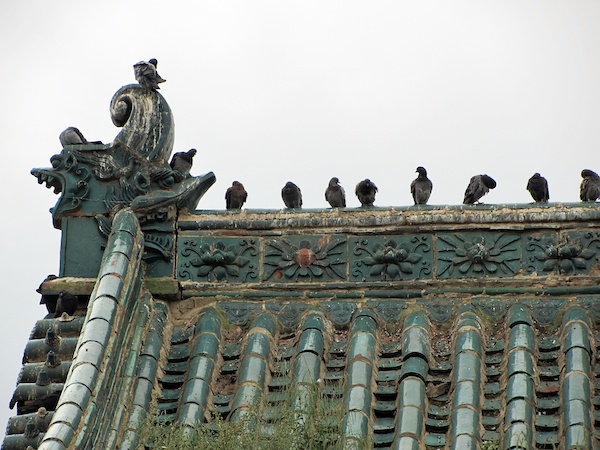
On the outskirts of the city stands the Soviet-era Zaisan Monument, which we climbed for great views of the city. It was built to honour the Russian casualties of World War 2, but also has friezes commemorating peace-time comradeship between the USSR and Mongolia.
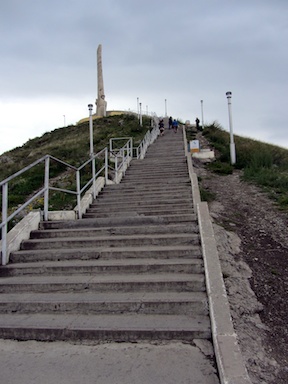
The steps up to the Zaisan Monument 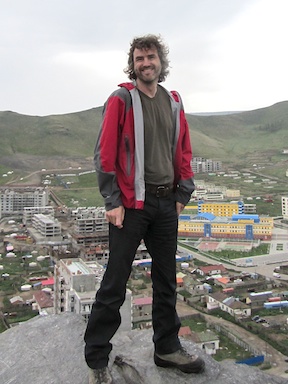
The view from the top
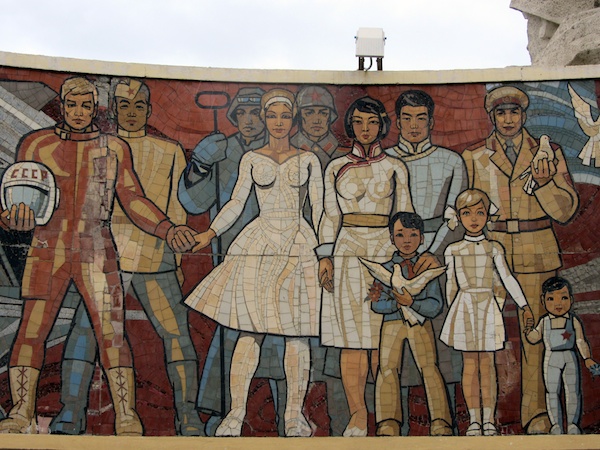
Looking down on the outskirts of Ulaanbaatar from this viewpoint, it is clear that major construction is going on, which Oggi told us was all new housing.
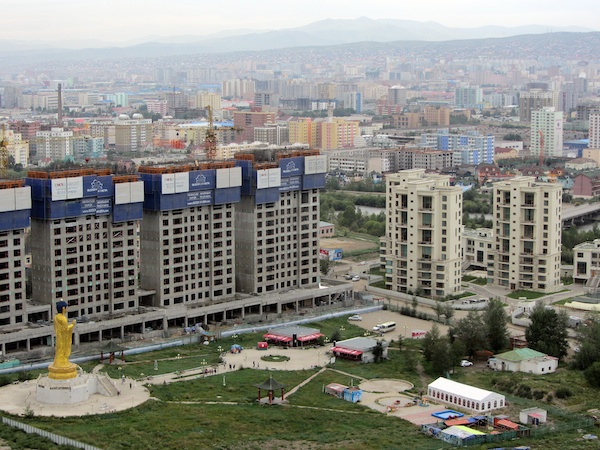
As soon as we left the monument, our bus got mired in traffic. I’ve seen a lot of traffic jams all over the world, but I’ve never seen quite so many cars packed into such a small space, inching along with only millimetres between them. Incredibly, there were people trying to hitch lifts and even hailing taxis from the side of the road, but the traffic wasn’t going anywhere and it would have been much faster to walk the short distance into town.
Eventually our driver fought free of the gridlock and turned onto one of Mongolia’s few graded roads. This is a bit of a misnomer, as it must be decades since it was last surfaced, and it has now decayed beyond any reasonable use. Traffic streams in both directions, but across the full two-lane width of the road there is often only space to get one vehicle between the pot-holes at a time, so the traffic consists of a wildly zig-zagging single line of cars and trucks heading in opposite directions. In places the road is so bad that the line snakes off into the increasingly boggy grassland before returning to the highway.
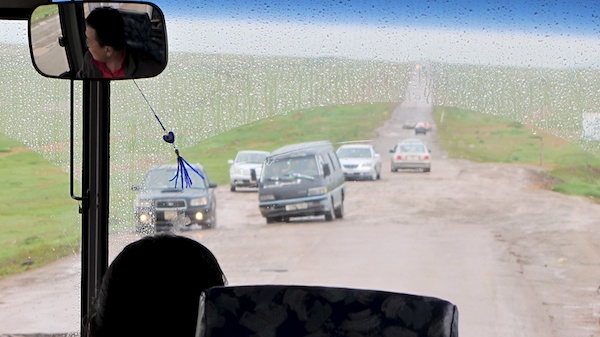
We were out here to visit the Chinggiskhan (Ghengis Khan) Monument, an amazing 40 metre stainless steel statue on top of a 10 metre museum complex dedicated to the Mongolian Empire and the Khans who ruled it.
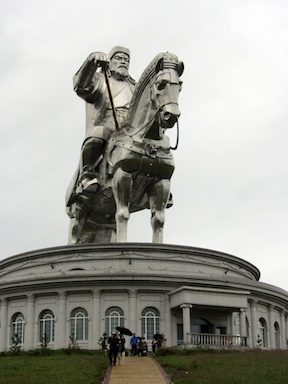
Chinggiskhan Monument 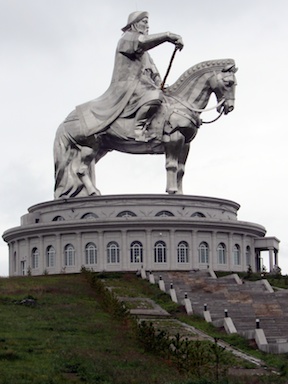
Worth a second photo, I reckon
At its height, the Empire spanned most of Eastern Europe and almost all of Asia including China and Japan. The museums contain artefacts from over 100 years of turbulent history, most of them bronze weapons and tools, along with fascinating descriptions and maps. While we were examining the contents of the second museum, deep inside the main structure, there was a power cut and everything went dark. The staff all had torches and were unsurprised and well organised, but our visit to the museums was over.
However, the building was still full of visitors who had not yet climbed up to the viewing platform on the horse’s head. The lift had obviously stopped, and the stairs that run up inside the stainless steel statue were in complete darkness. Nevertheless, we formed an international human chain, and with the help of cigarette lighters and mobile phones and not a little humour, we all made it to the top for great views of the statue and of the surrounding countryside.
